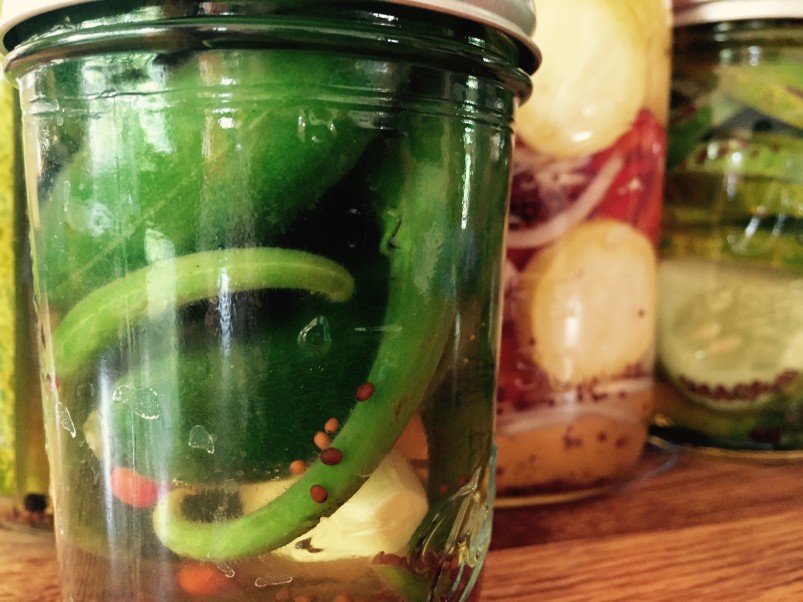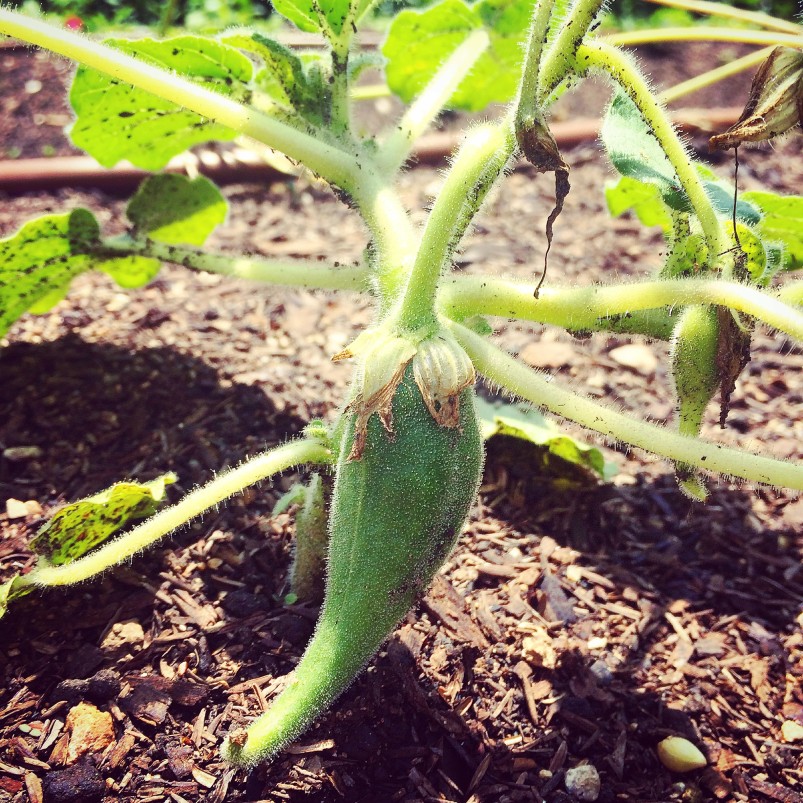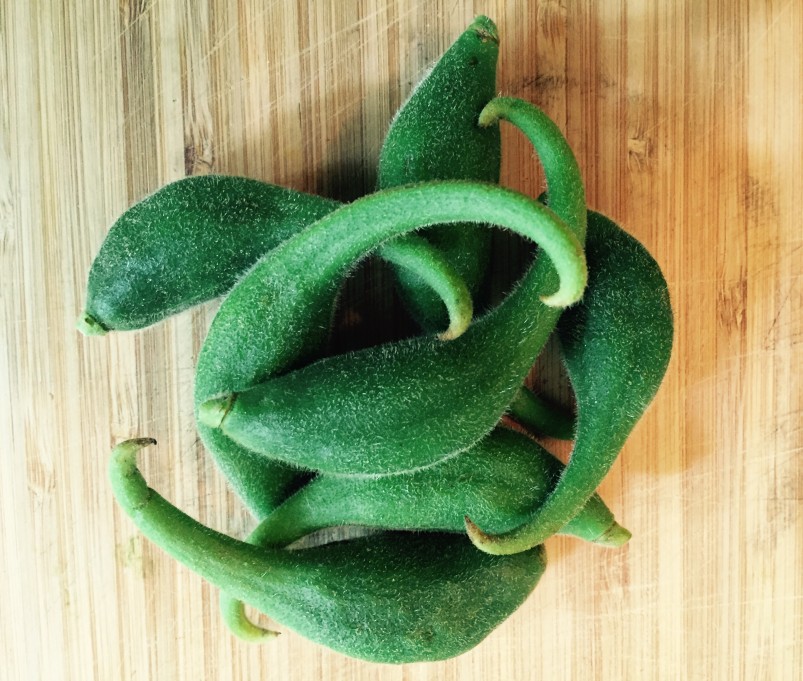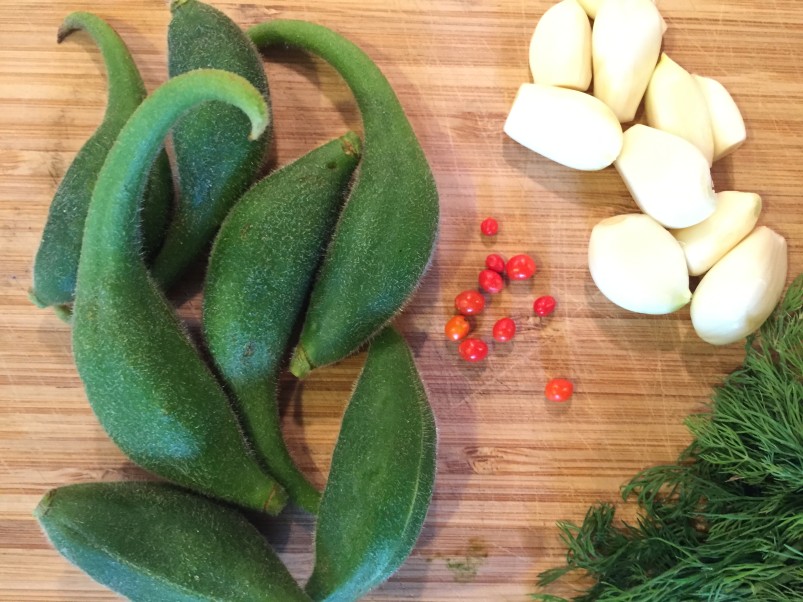Taste of Place: Pickling Devil’s Claw

Crunchy, flavorful and perfect for sharing; native plants pass the pickle test!
EMBRACING THE TASTES OF SUMMER IN CENTRAL TEXAS, we really got into a pickle with devil’s claw thanks to the culinary efforts of Danielle Pieranunzi. Pieranunzi is a project director at the Center focusing on sustainability initiatives and — along with Director of Horticulture Andrea DeLong-Amaya — leads our budding Taste of Place project. Read on to learn about the plant, the pickling and the project itself.
About Devil’s Claw
Devil’s claw is a low, spreading, bushy plant with attractive blossoms and is also very heat tolerant. An annual with pretty flowers, it should be grown in full sun. The name “devil’s claw” refers to the inner woody capsule which splits open at one end into two curved “claws” (which are quite sharp, so be conscious if you have pets in your yard and are letting any go to seed!). If you plan to eat them, be sure to harvest while the fruit is small, before they become woody. Use your favorite pickling recipe (or ours, below) or try it in a devilishly delicious curry dish!

Devil’s claw (Proboscidea louisianica) in the Taste of Place garden at the Center.
Pick and Pickle
Devil’s claw requires minimal preparation. The pods will make your hands a little sticky at first, but that washes off easily and you’re left with the lovely, velvety green, all ready to go.

These handsome devils are all washed up and ready to use!
Gather your pickling ingredients. Pieranunzi used chile pequin from the Taste of Place garden and added garlic and dill. Another other great option would be wild onion, which the Wildflower Center is growing in rows right next to its devil’s claw.

Spicy? Salty? Sour? Get colorful and creative with flavors.
There are a lot of great pickling recipes out there that will help you with brine preparation. A simple one to check out is the refrigerator pickled okra recipe from The Hip Girl’s Guide to Homemaking (you have to scroll down a bit for the recipe, but it’s easy breezy — just sub devil’s claw!). Ours turned out just right after a single week.

Inspired to try out some native edible plants and get in a pickle yourself? Use the comments to show and tell us how yours turn out!
Photos by Danielle Pieranunzi
Why Grow Edible Native Plants?
Native plants support healthy landscapes in that they require less water and fewer pesticides and fertilizers than are typically used in non-native gardening. Edible native plants are no different: They can be drought-tolerant and disease-resistant and need less tending. Most are perennials or self-seeding annuals, requiring a single planting for multiple harvests — a return on investment a gardener can really get behind!
Taste of Place
Focused on growing, harvesting and preparing native edible plants, Taste of Place is a collaboration between the Wildflower Center and The University of Texas at Austin Green Corps. The project aims to start a dialogue among students in various fields, such as landscape architecture, urban planning, sustainability and nutrition, about what it means to eat locally.
Related Stories:
The place-making power of native plants
More Recipes:
Chile Pequin-Citrus Turkey
Prickly Pear Cranberry Sauce
Vegan Wild Onion and Tuber Stew
Wild Onion and Chile Pequin Cornbread
Prickly Pear Margaritas
Spiced Pecans
Persimmon Dessert Bars
Chile Pequin Vinegar

